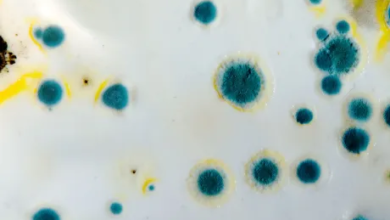
Autoimmune disorders are chronic, often debilitating conditions where the immune system mistakenly attacks the body’s own tissues and organs. Diseases like rheumatoid arthritis (RA) and lupus are among the most common autoimmune disorders, and they can lead to a wide range of symptoms, including joint pain, inflammation, fatigue, and organ damage. For many years, Hydroxychloroquine tablet (HCQS 200) has been a vital medication in managing these conditions. Though HCQS was originally developed as an anti-malarial drug, it has proven highly effective in supporting immune health and controlling the symptoms of autoimmune diseases.
In this article, we’ll explore how HCQS 200 works, its role in managing autoimmune disorders, its benefits, and its potential side effects.
Understanding HCQS 200 and Its Mechanism of Action
HCQS 200, or hydroxychloroquine sulfate, is an immunomodulatory drug used to treat various autoimmune diseases. It belongs to a class of medications called disease-modifying antirheumatic drugs (DMARDs). HCQS works by modulating the immune system, reducing inflammation, and preventing the immune system from attacking healthy tissues.
Hydroxychloroquine’s primary mechanism of action in autoimmune disorders is its ability to interfere with the communication between immune cells. Specifically, it alters the functioning of antigen-presenting cells and reduces the activity of T-cells, which are white blood cells that play a central role in the immune response. By doing so, HCQS helps decrease the abnormal immune activation that characterizes autoimmune disorders. This modulation reduces inflammation, joint damage, and organ damage in patients with diseases like RA and lupus.
Additionally, hydroxychloroquine has a mild blood-thinning effect, which can be beneficial in lupus patients who are at higher risk of blood clots. It also helps prevent skin damage and flare-ups in lupus patients by reducing the harmful effects of ultraviolet (UV) light on the skin.
How HCQS 200 Benefits Patients with Rheumatoid Arthritis
Rheumatoid arthritis is a chronic inflammatory disorder that primarily affects the joints but can also affect other organs. In RA, the immune system attacks the lining of the joints, causing painful swelling that can eventually result in bone erosion and joint deformity. One of the main goals of RA treatment is to control inflammation and prevent joint damage.
HCQS 200 is commonly used to manage RA, especially in combination with other DMARDs. Its ability to reduce inflammation makes it effective in easing symptoms like joint pain, stiffness, and swelling. Though it doesn’t provide immediate relief like painkillers, it works overtime to slow the progression of the disease. Patients typically start to notice improvement in their symptoms after several weeks or months of consistent use.
One of the advantages of HCQS 200 in RA treatment is its relatively mild side effect profile compared to other medications used to treat the condition. While drugs like corticosteroids and stronger DMARDs can cause significant side effects, HCQS is generally well-tolerated and less likely to cause immune suppression, which can leave patients vulnerable to infections.
HCQS 200 in Lupus Treatment: Managing a Complex Disease
Lupus, or systemic lupus erythematosus (SLE), is a complex autoimmune disease that can affect multiple organs, including the skin, kidneys, heart, lungs, and brain. Lupus patients experience periods of remission, where symptoms improve, and flare-ups, where symptoms worsen. The disease can lead to inflammation, tissue damage, and complications like kidney failure or cardiovascular disease.
HCQS 200 is a cornerstone of lupus treatment due to its immunomodulatory properties. It is often prescribed to lupus patients because it can help control inflammation and prevent flares, making it possible for patients to live with fewer debilitating symptoms. Hydroxychloroquine is particularly effective in treating the skin and joint symptoms of lupus and in preventing the occurrence of new flares.
One of the key benefits of HCQS 200 in lupus management is its long-term protective effects. Studies have shown that lupus patients who take hydroxychloroquine regularly have fewer flare-ups and experience less severe disease activity. Additionally, hydroxychloroquine has been shown to improve survival rates in lupus patients, as it helps reduce the risk of severe organ damage and complications like blood clots.
HCQS 200 is also relatively safe for long-term use, making it an ideal medication for lupus patients who need continuous treatment to control their symptoms.
Immune Health and Long-Term Benefits of HCQS 200
One of the primary concerns for patients with autoimmune disorders is maintaining a balance between controlling the disease and not overly suppressing the immune system. Many treatments for autoimmune diseases work by suppressing the immune system to prevent it from attacking healthy tissues, but this suppression can leave patients vulnerable to infections and other illnesses.
HCQS 200 strikes a balance by modulating the immune system rather than fully suppressing it. This means that while HCQS reduces the abnormal immune activity that causes damage in autoimmune diseases, it doesn’t completely shut down the body’s ability to fight infections. As a result, patients on HCQS are less likely to experience infections compared to those on stronger immunosuppressive medications.
Moreover, long-term use of HCQS has been associated with additional health benefits. For example, it has been found to lower cholesterol levels and improve blood sugar regulation, which can be important for patients with lupus or RA who are at higher risk of cardiovascular disease and diabetes.
Side Effects and Risks of HCQS 200
While HCQS 200 is generally well-tolerated, it is not without risks. Some patients may experience side effects, which are usually mild but can become serious in rare cases. Common side effects include:
- Nausea or gastrointestinal discomfort: Some patients may experience stomach upset or diarrhea when starting HCQS, but these symptoms typically improve over time.
- Headaches and dizziness: These are occasional side effects that can occur but usually subside with continued use.
- Skin rashes: Though rare, some patients may develop rashes or other skin reactions while on the medication.
The most serious potential side effect of HCQS 200 is retinal toxicity. Long-term use of hydroxychloroquine can cause damage to the retina, leading to vision problems. This is why patients on HCQS are advised to undergo regular eye exams to monitor for early signs of retinal damage. The risk of this side effect increases with prolonged use and higher doses, but for most patients taking the standard dose, the risk is low.
Patients who take HCQS 200 should also inform their healthcare providers about any other medications they are taking, as hydroxychloroquine can interact with certain drugs.
Conclusion
HCQS 200 plays a crucial role in managing autoimmune diseases like rheumatoid arthritis and lupus by modulating the immune system and reducing inflammation. Its ability to improve symptoms, prevent disease flare-ups, and provide long-term protection makes it a valuable treatment option for many patients. While it is generally well-tolerated, patients should be aware of potential side effects, particularly related to eye health, and work closely with their healthcare providers to ensure safe and effective use. By supporting immune health without overly suppressing the immune system, HCQS 200 helps patients maintain a better quality of life while managing their autoimmune disorders.


